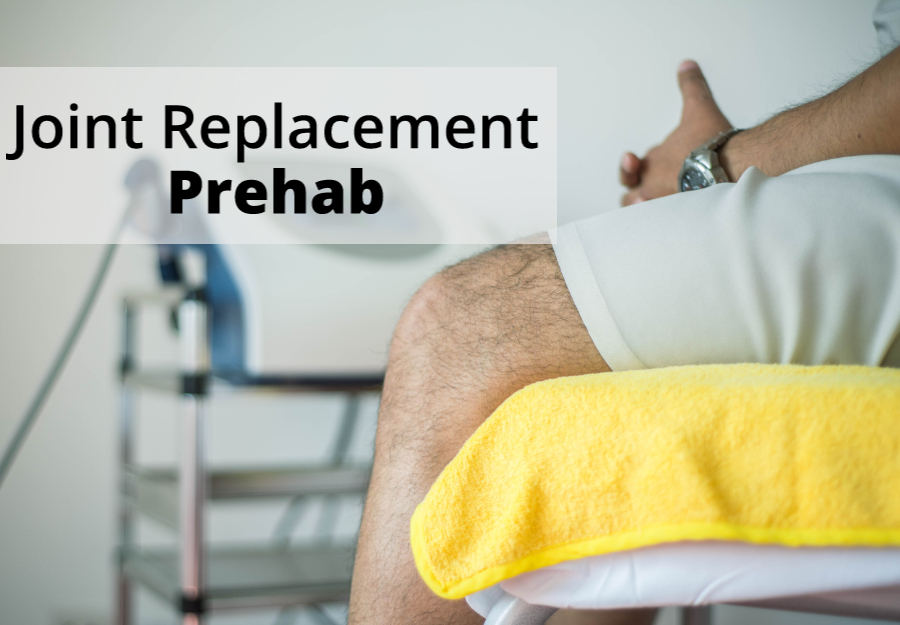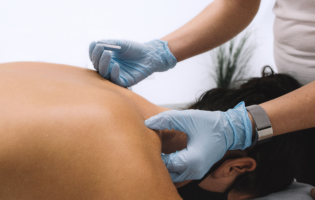Total Therapy Blog

Joint Replacement Prehab
This article was written by our Physiotherapist, Matt Janzen.
Growing up in North Vancouver, I was a multi-sport athlete and competed at a high level in both lacrosse and hockey. Neither of those sports are particularly kind to the body, but they did gift me with my own injury and rehab experiences that helped drive me toward physiotherapy. Clinically, my primary interests are in orthopedic and neurological conditions, two areas which I believe pair well when it comes to understanding human movement.
Joint Replacement Prehab
Osteoarthritis (OA) is the most common arthritis in Canada, affecting one out of eight (13%) of Canadians. Commonly affected areas include the knees, hips, hands, low back, and neck.
Signs and symptoms of OA can include joint stiffness, pain, swelling and weakness. These typically worsen in severity as the disease progresses. While it is often referred to as the “wear and tear” arthritis, the reality is that the exact cause is unknown. There are, however, many well-known factors which may contribute to a worsening or rapid progression of symptoms; these include physical inactivity, genetics, obesity, and decreased leg strength.

OA is usually treated with conservative measures first, such as exercise, bracing, and medications for pain management. When OA has progressed to a point where it can no longer be managed
conservatively, surgical intervention in the form of a Total Knee Replacement (TKR) or Total Hip Replacement (THR) may be suggested by your doctor or surgeon. These surgeries have excellent
outcomes with regards to patient satisfaction, but both involve a lengthy rehab process.
What is “Prehab?”
Prehab (short for “prehabilitation”) has different meanings depending on the target population. For example, prehab for high level athletes involves performing specific strengthening, flexibility,
and body control exercises in-season or during off-season to help prevent injury. For individuals with arthritis waiting for a knee or hip replacement, prehab exercises are performed to enhance recovery following surgery.

What are the goals of prehab?
Following a total joint replacement, the body has to adjust to more than just the new hardware that has been installed. Depending on the surgical procedure, certain muscles may be cut to access the joint being replaced. The early stages of recovery in hospital and at home result in a lot of time sitting or lying down, which negatively affects cardiovascular fitness. It’s also very common to feel unsteady on a joint while getting used to it, and pain medications prescribed post-surgery can also make balance more difficult.
Prehab for hip and knee replacements focuses on strengthening the muscles around the joint being replaced (typically the quadriceps, hamstrings, and glutes); improving balance and
stability; and optimizing cardiovascular fitness prior to surgery. As a bonus, the same exercises which will help with your recovery after surgery can also decrease the pain and stiffness in your affected joint while you are waiting for surgery.
Why is Prehab important before a joint replacement?
Studies have shown that prehab programs can contribute to:
- Decreased length of hospital stay after surgery
- Reduced likelihood of requiring further inpatient rehabilitation following surgery
- Increased strength and ability to complete daily tasks prior to surgery
- Improved range of motion prior to surgery
- Improved knee range of motion following surgery

What kind of prehab exercises should you focus on?
Prehab exercises can be about as simple or complicated as you want them to be, but should focus on the following:
Range of Motion – Joints need to have adequate range of motion to complete everyday tasks like climbing stairs, getting dressed, and sitting comfortably. Having good range of motion prior to surgery makes it easier to regain range after surgery. Stretching your thigh, hip, and calf muscles can help in this regard.
Strength – strong muscles in your legs, especially quadriceps, glutes, and hamstrings, make walking, stairs, and other functional activities easier after surgery. Exercises like wall squats, water exercises, leg extensions, and heel raises can improve strength in important muscles before surgery.
Balance – the better your balance before surgery, the less affected you will be by post-surgery wobbliness. Some ways you can practice your balance are by standing with your feet together or in tandem (and eyes closed if you want to make it really hard!) and practicing exercises standing on one leg.
Cardiovascular fitness – increasing your exercise endurance will help with your post-surgery rehab sessions. Losing weight prior to surgery can help reduce pain in the affected joint as well. Pool exercises, stationary cycling, and walking are good low impact options.
If you are waiting for a joint replacement surgery, want to reduce your existing knee pain, or are recovering from a joint replacement, a certified physiotherapist or kinesiologist can help you find the best exercises to manage your symptoms and optimize your recovery.










Follow Us!
& Stay Up To Date
BLOG